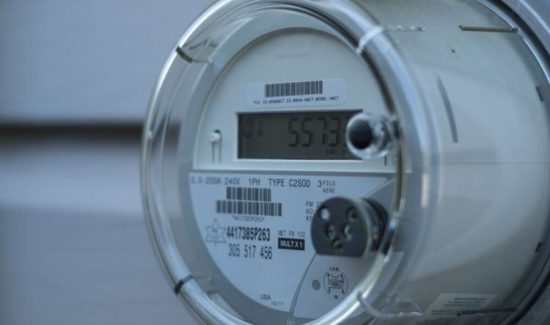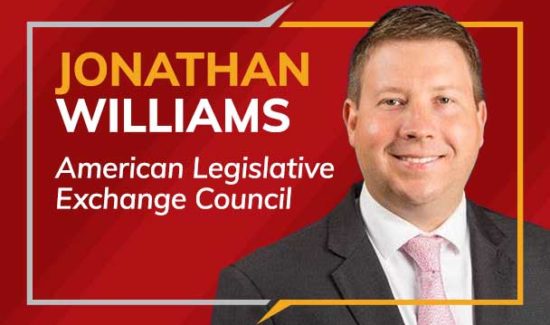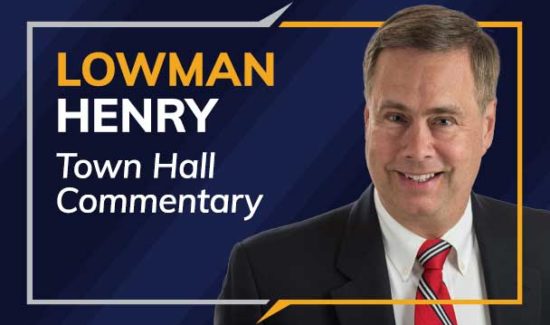Sluggish Economy Creates State Budget Problem
(February 7, 2017)–Summary: Three months ago (see Policy Brief Vol. 16, No. 47) we called attention to the slowdown in statewide employment since March of 2016. Data since indicates the slowdown has not been reversed. Recently released private sector employment figures for December 2016 continued to disappoint, dipping below November’s reading and standing only 37,000 above the December 2015 level. This weakness is having a ripple effect in the state’s economy and tax revenues that trail projected estimates and widening the budget deficit. Fixing the economy should be top priority and talk of tax increases is exactly the wrong approach.
____________________________________________________________________
Pennsylvania’s private sector job count in December 2016 rose only 37,000 from December 2015, well below the average gain of 52,000 from December 2010 to December 2015. Indeed, the pace of job growth coming out of the recession has been replaced by a cooling, especially noteworthy during the last few months of 2016 following a respectable first half. There can be little doubt that for much of the period of 2010 through 2015 the relatively strong job gains reflected the advent of Marcellus gas drilling and production. Still, notwithstanding the stronger gains since the 2009-10 recession the average yearly job gains of 13,600 private jobs in the new century pale in comparison to the 84,600 average yearly rise in the late 1990s.
Sluggish growth of late can be traced to the weakness in goods producing categories, mining and logging, construction, and manufacturing. Reflecting the slide in natural gas prices mining jobs fell on a year over year basis every month in 2016—a trend that actually began in April 2015. By 2016 the monthly average of the sector had dropped by 12,800 jobs (-34 percent). And that decline has had a significant negative effect on other sectors.
Manufacturing tells a similar story, losing 2,300 jobs in 2016 compared to the 2015 yearly average. After a small rebound from the recession low point, factory employment has been basically flat for four years. Moreover, the longer term picture is very poor with 2016’s average of 566,000 jobs a drop of 15 percent from 2006’s level of 670,400.
Employment in service producing industries has fared much better than in the goods producing sectors with education and health services leading the way. For instance, private services employment grew 41,300 from December 2015 to December 2016. Moreover, the sector has added 30,600 jobs per year since 2006 thanks to a relatively strong performance after the recession that accounts for all the net private sector job gains during the period.
In fact, overall the private sector managed average annual increases of only 18,000 jobs from 2006 to 2016 reflecting the big losses in manufacturing.
With the new national emphasis on policies focused on stimulating manufacturing and energy production perhaps this picture might change for the better in the future.
For the present and near term, service sectors are keeping the Pennsylvania economy moving forward, albeit slowly. But the reality is that many of the service jobs being created are very low paying with few benefits and their output has little or no multiplier impact on the economy. Thus, a concentration of employment gains in low labor productivity, low wage jobs industries provide only a very small impetus to state revenue. This is evident in the state’s tax revenue collections data.
Moreover, the recent slackening pace of overall job gains and the dramatic shift in the industry mix of employment away from goods production are definitely having an effect on state revenue collections. Since the recession ended in 2010, annual (calendar year not fiscal year) general fund revenue has risen at a slow 2.5 percent average yearly rate, with the highest increase posted at only 3.7 percent in 2011 and two other years reaching just over three percent. 2012’s increase was barely two percent and 2013 registered a paltry 1.6 percent gain. But the low point over the last six years was the 1.2 percent increase from 2015 to 2016. Thus far in the first six months of the current fiscal year, general fund revenue is maintaining its weak growth pattern and is up only 0.4 percent compared to the first six months of the prior fiscal year ($13.45 billion vs. $13.40 billion).
While this is a slim positive gain, it is $367 million or 2.7 percent below what the Commonwealth budget projected would be collected thus far ($13.82 billion). And December’s monthly revenue collection was four percent below the budget estimate figure.
Based on the slow pace of revenue gains of late it is not surprising that year to date collections in all major categories of tax revenue (corporate net income, personal income and sales and use) are running behind the forecast for the first six months of FY 2016-17.
Of the three, the $116 million shortfall in the corporate net income tax is largest in percentage terms at 8.9 percent under forecast. The personal income tax has also performed below not just last year’s level, but estimated levels as well. Through the first six months of FY 2016-17, the collections on personal income tax are $126 million or 2.3 percent under the budgeted figure. Meanwhile, sales and use tax revenue was $133.3 million (2.6 percent under budget.) These three account for most of the overall revenue shortfall although other categories were also lower and a few small sources registered increases.
Of course revenues are only half of the ledger—spending being the other half. Thus far in FY 2016-17, general fund spending is running about $4.4 billion higher than revenues collected. Typically, the first six months of the fiscal years have spending running ahead of revenues. With the heaviest revenue inflows in the spring, the spending–revenue gap is dramatically reduced. But for the last few years, the fiscal years have ended with increasingly larger deficits.
Just recently the Independent Fiscal Office (IFO) reported that it is now estimating the current year deficit at $700 million as a result of a forecast for a further $250 million revenue shortfall. The Director of the IFO in comments to the Associated Press on January 27th said, "We’re really not getting any kind of economic growth through January…So it’s very puzzling."
On the contrary, slow growth in Pennsylvania is not much of a mystery. The state rates very poorly in state rankings of business taxes, business climate, and its two largest metro areas are among the lowest ranking for new business formations. High taxes, the threat of more taxes, (especially on the gas industry) enormous unfunded liabilities in the state employee and teacher pensions that portend tax increases all hamper the state’s ability to grow and attract business. Labor union problems, especially with public sector employees, combined with the rapid expansion of the number of Midwestern states adopting right to work laws will put the Commonwealth at an ongoing serious competitive disadvantage.
One thing should be perfectly clear. Raising tax rates or levying new taxes on business in an attempt to close the deficit will be counterproductive. There is no substitute for adopting policies that favor free enterprise and making the state more business friendly.
Jake Haulk, Ph.D., President
Frank Gamrat, Ph.D., Sr. Research Associate
If you wish to support our efforts please consider becoming a donor to the Allegheny Institute.The Allegheny Institute is a 501(c)(3) non-profit organization and all contributions are tax deductible.Please mail your contribution to:
The Allegheny Institute
305 Mt. Lebanon Boulevard
Suite 208
Pittsburgh, PA15234
For more on this topic click here
Link to Allegheny Institute Website
Forward this Brief to a friend





